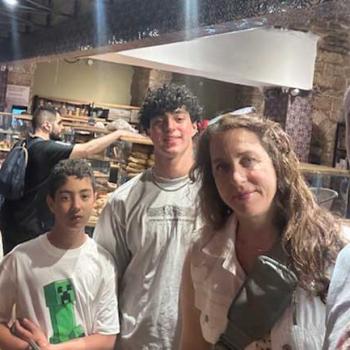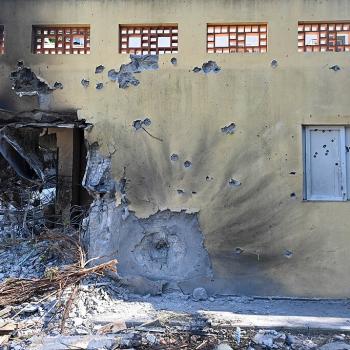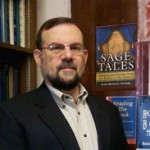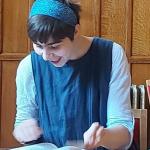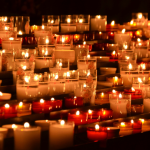By Dr. Erica Brown
In the midst of the post-flood re-creation stories in this week’s Torah reading, we find two different responses to the tragedy of the world’s destruction. The first, in chapter 10, is the rebuilding and repopulation of the world. Like God himself in the first chapter of Genesis, Noah is responsible for plant and animal life and the regeneration of his own species.
Part of this is accomplished through the release of animals from the ark and from Noah’s planting a vineyard, returning to his former profession as a “man of the land.” His carpentry days are over as he returns to farming. He and his sons spread out, have children and build cities. They fulfill the command uttered to Adam and Eve and reiterated in this second creation account: “Be fruitful and multiply and fill the earth.”
Tragedy can inspire a response of productivity and an overwhelming desire to return to the routine and prosaic aspects of life. The heroic is found in the ordinary. The act of planting literally grounds Noah, returning him to the image of primordial man as the enigmatic combination of the breath of God and the earth of the land.
But there is also another response in our portion, the more anticipated response. In chapter 11, all of humankind, as it appears from the use of plural nouns, huddle for protection:
Everyone on Earth had the same language and the same words. And as they migrated from the east, they came upon a valley in the land of Shinar and settled there. … And they said, “Come let us build a city, and a tower with its top in the sky, to make a name for ourselves; else we shall be scattered all over the world.”
Reversing God’s mandate that they fill the Earth — and reversing the city-building that has taken place in chapter 10 — society decides as a unit to stay together and both isolate and insulate themselves collectively from a world gripped by the shadow of destruction. Two images confirm this. They chose to place their city in a valley, an odd choice after a flood. It would seem that in a valley, presumably surrounded by mountains, they would make themselves inaccessible. The surrounding heights would wall them in together and separate them from the outside world. In contrast, to protect themselves from another sky-related disaster, they built a tower as the centerpiece of their city. In the event of another flood, they could use the height of this building for protection. Both valley and tower create a false sense of protection and invincibility. They reject God’s command to diversify out of the fear that they be “scattered all over the world.” Isolationist ideologies feed on this primal fear of being scattered. The only authentic response to terror appears to be to group together. The tower is not a symbol of being grounded but of being elevated, of removing oneself from earthly connections.
This plan, convincing as it sounded at first, failed. God did not intend humanity to cloister together and speak and act in the plural. God does this not by destroying their tower, the obvious response; they could always rebuild a tower. God accomplishes this objective by making them speak multiple tongues. Unable to communicate with each other, they cannot continue to work as a unified team. Ultimately, they are forced into developing as separate nations: “Thus the Lord scattered them from there over the face of the whole earth; and they stopped building the city … and from there the Lord scattered them over the face of the earth” (11:8-9).
These two responses to tragedy, to consolidate and pull away from the world and to continue life as normal, have made their mark in general and specifically in Jewish history. Today, too, we find these two responses in the face of evil. The word “evil” seems to be bandied about more than ever lately. Between global terrorism and random shootings, people are confused and afraid. This paralysis of fear creates the “Tower of Babel” response — pull away from the world, abstain from normal activity and try to form cohesive communities to bubble oneself away from reality. At the same time, we are advised to continue life as normal, even when life doesn’t seem normal — the Noah response.
John Haynes Holmes writes in the book, My Idea of God: A Symposium of Faith: “Evil is a fact, not to be explained away, but to be accepted; and accepted, not to be endured, but to be conquered. It is a challenge neither to our reason nor to our patience, but to our courage.” The “Tower of Babel” response is the rational and understandable response to evil, to take shelter and to create distance. But evil is not rational, and rational responses don’t always work. The courageous response is to take strength from the ordinary. The builders of the Tower of Babel built only one city that eventually stood unfinished. Noah and his sons built many cities that grew and became centers of the ancient Near East.
In the absence of reason, we have routine. Noah teaches us that there is something noble in the planting of a garden, the care of the natural world and the hope that a new generation of people can bring. You cannot transcend evil or cocoon yourself from it, hermetically sealing its touch on your life. You can garden, the text tells us, and plant new life in place of what has been destroyed. Tower or garden: Choose your image well, the text challenges us, for it will form the spine of your outlook. Choose life.
Dr. Erica Brown is scholar-in-residence for The Jewish Federation of Greater Washington. Her latest books are “Leadership in the Wilderness” (OU/Koren) and “Happier Endings: A Meditation on Life and Death” (Simon & Schuster).
ON Scripture — The Torah is a weekly Jewish scriptural commentary, produced in collaboration with Odyssey Networks and Hebrew College. Thought leaders from the United States and beyond offer their insights into the weekly Torah portion and contemporary social, political, and spiritual life.




